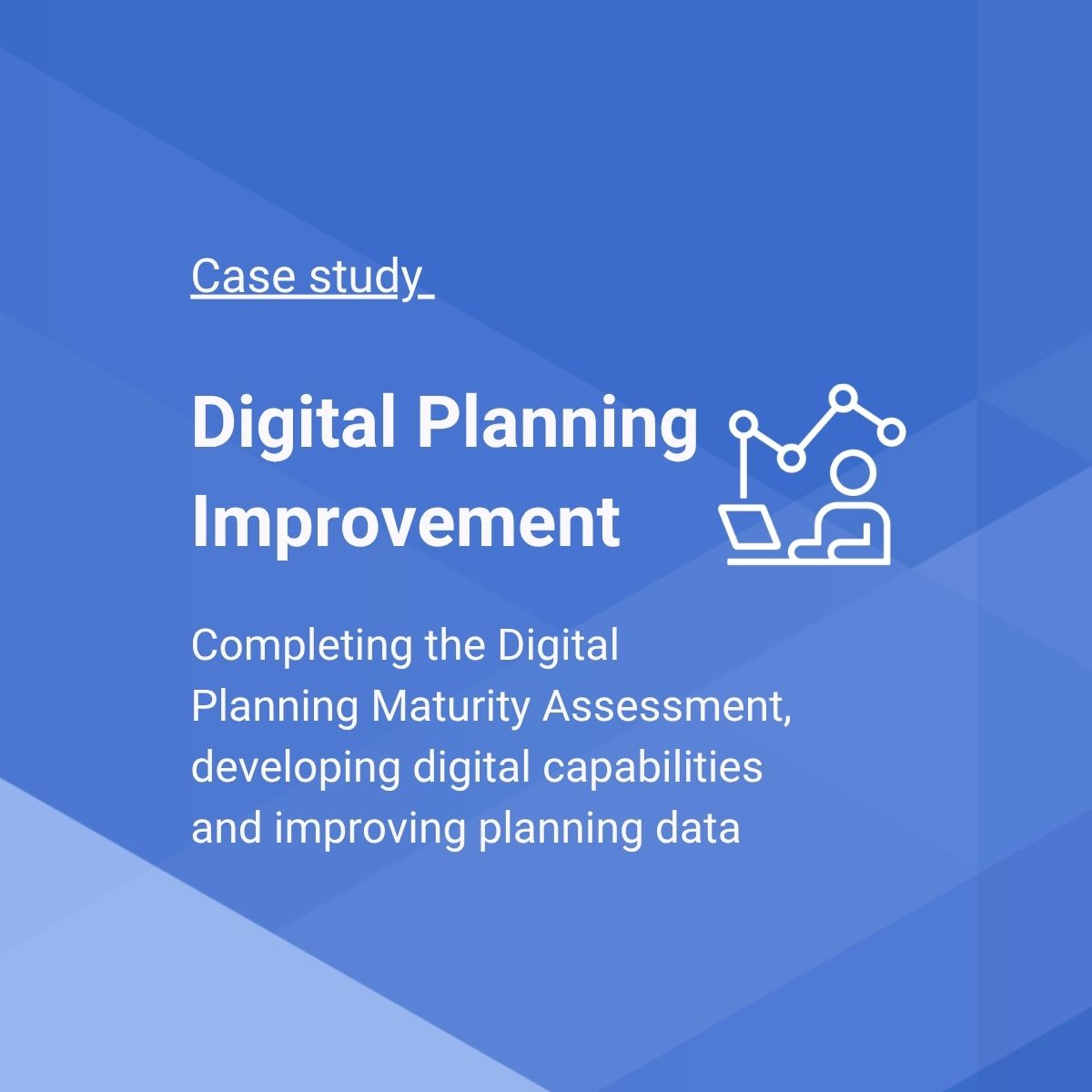Background
East Cambridgeshire District Council serves over 85,000 residents across approximately 65,000 hectares. The council joined the Digital Planning Improvement Fund in Round 2, in 2024, embarking on a journey to modernise its planning services and enhance data capabilities.
The Challenge
Prior to the transformation, the council faced several challenges:
- Underutilisation of existing digital systems
- Paper-heavy processes limiting accessibility and efficiency
- Difficulty in managing and maintaining critical planning data
- Website issues affecting public access to planning information.
Digital Planning Maturity Assessment (DPMA)
In April 2024, the council completed ODP's Digital Planning Maturity Assessment, providing a structured framework to evaluate current capabilities and identify improvement areas.

“Thankfully the suggested actions on a DPMA were really useful and helped inspire and prompt a lot of improvements within our department and for managing our data. It is great to see the significant progress we have made since the assessment.”
Hugo Rossetti, a Technical Support Officer at East Cambridgeshire District Council
Transformation
Some of the actions taken as a result of the assessment include:
- Software and technical training – to make full use of existing and adopt new systems
- Website update – accessibility, readability, navigation and communication. Planning web pages and guidance in particular have been improved for residents.
- Improve collaboration – adopted Microsoft Teams to work on documents together and track project progress. Also changed their office layout to be more open and improve knowledge sharing.
- Procedure overhaul – far more paper-light and adopted more digital skills. Reduced reliance on printing.
- Understanding and use of current data changed. Know what and why different data is stored and what needs to change with future data requirements.

Making planning data available
Part of the DPIF is aimed at making data available on the Planning Data platform. The council has successfully published eight datasets on the platform, with varying levels of complexity.
Conservation Areas and Article 4 Directions
- These datasets were relatively straightforward to publish as they were already maintained digitally. The process involved:
- Data cleansing to improve quality
- Reformatting to meet platform specifications
- Using these simpler datasets to develop skills for more complex data challenges.
Listed Buildings Data
With 981 listed buildings in the area, this presented a more significant challenge:
- Matching council records with Historic England data
- Defining building curtilage using Local Land Charge polygon data
- Creating spatial joins between different data sources to produce comprehensive records.
Tree Preservation Orders (TPOs)
This represented the most substantial challenge:
- Digitising over 520 paper-based Tree Preservation Orders
- Integrating existing tree mapping with digital information
- Implementing the TPO module on Uniform
- Developing Power BI reporting capabilities with IT support
- Identifying TPOs requiring review or modification through improved data visibility.
Next steps
East Cambridgeshire District Council continues its digital journey with plans to:
- Finalise and publish Listed Building curtilage data
- Complete the review of TPO records, applying amendments and revocations where needed
- Establish robust digital maintenance procedures for all planning data
- Expand skills and software training to ensure resilience and to avoid relying on one or two people
- Implement further internal digitisation projects, including mapping solar farms and creating local heritage lists
- Explore web mapping solutions based on successful implementations at other authorities.
Lessons learned
For councils embarking on similar digital transformation journeys, East Cambridgeshire offers the following advice:
- Prioritise high-impact Areas: Focus first on digitising documents that benefit both staff and the public
- Learn from peers: Draw inspiration from successful initiatives at other local authorities within the ODP community
- Build team capability: Develop skills across the team rather than relying on individual experts
- Think strategically: Consider longer-term transformation opportunities alongside immediate improvements
- Start small, scale up: Begin with manageable projects to build confidence before tackling more complex challenges.
This case study demonstrates how a methodical approach to digital transformation can yield significant benefits for planning services. Even with limited resources, East Cambridgeshire District Council has shown that meaningful improvements are possible through careful planning, skills development, and a focus on both staff and public needs.
